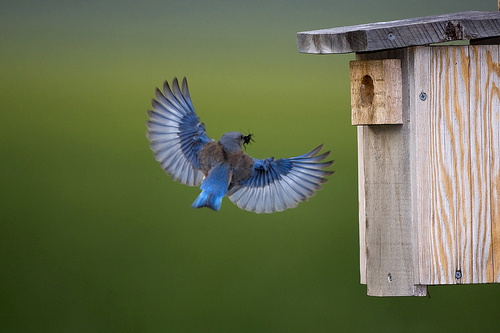Note: This project comes to us from the Flux Foundation as part of Maker Camp 2014.
For downloadable PDFs of Flux Foundation’s Tweethaus project, go to Tweethaus Project website.
The project’s website reads:
TweetHaus, a collaboration between the FLUX Foundation and community partners, is a public art + ecology project focused on citizen science, interactive learning and collaboration. It fosters community through the design, construction and installation of bird habitats and public pathways in urban environments.
Grounded in our belief that art builds community and that community can build art, the first installment of TweetHaus takes place in our own backyard—Oakland, CA, with Park Day School as its locus.
TweetHausOAK engaged 3rd grade students at Park Day in collaborative, project-based learning. Under the mentorship of FLUX artists, Park Day teachers and community professionals, an 8-week curriculum guided five teams of 3-4 students in the design, construction and installation of an urban Western Bluebird habitat. The program began with students and mentors collaborating in the classroom to learn about bluebird habitat and ecology. The teams put knowledge into practice by venturing into the neighborhood to find appropriate birdhouse locations. They then returned to the classroom and the school’s garden to design and construct a unique birdhouse and bluebird-supportive garden for installation at each specific location. The kids’ excitement about the program is uncontainable! Take a look at our photos on Flickr to see for yourself! Two birdhouses have been installed at Mosswood Park in Oakland, one at a neighborhood home and two at Park Day School.
TweetHaus will expand into the larger community through participation in Maker Faire and in new partnerships with the Oakland Parks and Recreation Department and other local community organizations and schools interested in implementing the curriculum.

















